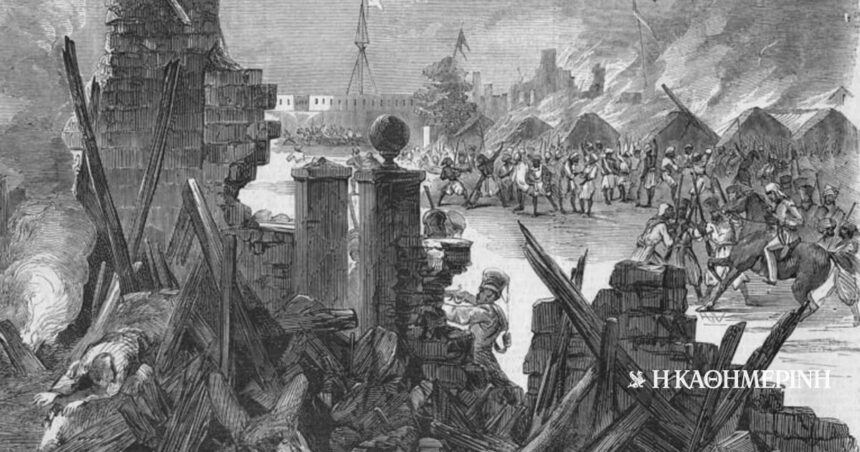For decades, the British and in particular the British East Indies company, which served as a dominant force on behalf of the British crown, used in India A variety of methods and tactics to ensure their sovereignty and control of the Hindu princes. In addition, the old Indian aristocracy had been replaced everywhere by British officials, while there was a growing rate of westernization.
This was about the situation in the first months of 1857, when a rumor began to spread among the Sipai (the Indians serving in armed European forces) that The grease used to fertilize the cartridges was a mixture of lords of pigs and cowsAs a result, contact with him was an insult for both Muslims and Hindus, as they were in contrast to their religious beliefs. And although there were no convincing evidence that this was true, the rumor that the cartridges were “infected” reinforced the suspicion that the British were trying to undermine basic elements of traditional Indian society and culture.
In this context, at the end of March 1857, the Sipai Mangal Pandy He attacked British officers at the Military Guard in Barakpor, but was arrested and executed by the British. Next month, the Sipai in Mirat refused to use the cartridges given to themresulting in long -term prison sentences. The cruelty of punishment, however, enraged their comrades and resulted in the general uprising of the Indians against the British.
With the exception of the Mugal Emperor and his sons, none of the important Indians prince came to the side of the rebels.
On May 10, the situation evolved into a revolt. Sipai shot their British officers and walked toward Delhiwhere there were no European troops. There, the local Sipai guard joined Mirat’s and by night the Mugal emperor Bahandur Sah B΄ had been restored to power. The occupation of Delhi was a trigger for the generalization of the uprising, which quickly spread throughout northern India. However, with the exception of the Mugal Emperor and his sons, none of the other important Indians prince came to the side of the rebels.
The British, who had not realized the seriousness of the situation in time, were now called upon to confront the uplifted Indians. During the summer, battles began in Delhi, Kanpour and Laknouwith the latter remaining at the heart of the conflict and in the winter of 1857–58. The final battles took place in Hugh Rose in early 1858. Peace would be officially declared on July 8, 1859, closing a period of conflict with a key feature of both the British and the rebels.
Immediate result was the general reorganization of the army in India and the launch of the British political consultation with the Indians.
Immediate result of the uprising was the generalized reorganization of the army in India and the launch of the British political consultation with the Indians, as it was considered that their lack of communication with Indian public opinion had contributed to both the event and the generalization of the crisis.
At the same time, however, any serious hope has been reduced to revive the society and culture of the past, or for the exclusion of the West from those in India. This is because on the one hand the actors of traditional society had failed in the uprising, while the princes had demonstrated with their attitude absolute weakness. So, The traditional structure of Indian society would gradually give its place in a more westernized social systemfrom which a strong middle class emerged from an increased sense of nationalism.
Column: Myrto Katsigera, Vassilis Minakakis, Antigoni-Despina Poumenidou, Athanasios Syroplakis




